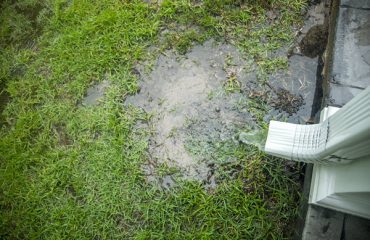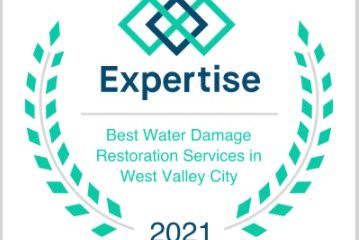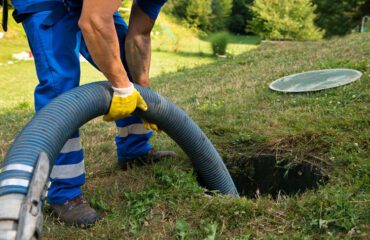Groundwater floods significantly threaten communities, causing property damage, water source contamination, and disruptions to daily life. Proactive measures and preparedness are crucial for preventing these floods and mitigating their consequences. This spring, many counties in Utah took steps to be prepared for runoff from record-breaking snowfall. Many communities used the tools listed below to be ready for the extra water. This article provides valuable insights and strategies to help communities prepare for and prevent groundwater floods.
Understanding Groundwater Floods
Groundwater floods occur due to factors such as excessive rainfall, poor drainage systems, high water table levels, and hydrogeological conditions. Excessive rainfall, particularly in areas with inadequate drainage systems, can lead to water accumulation and rising groundwater levels. High water table levels, influenced by precipitation, soil type, and geology factors, can increase the risk of groundwater floods. Hydrogeological conditions, such as the presence of permeable soils or geological faults, can impact the movement and storage of groundwater, potentially leading to flooding. By understanding the causes and consequences of these floods, communities can better prepare and take appropriate preventive actions.
Assessing Vulnerability
Identifying areas at risk of groundwater floods is the first step toward prevention. Several factors contribute to vulnerability assessment. Geographic factors such as topography, proximity to bodies of water, and soil permeability play a significant role. Areas located in low-lying regions or near rivers and streams are more susceptible to groundwater floods. Historical data and flood mapping provide valuable information about past flood events, helping communities identify areas prone to flooding. Groundwater monitoring systems, including wells and piezometers, enable the measurement and analysis of groundwater levels, providing insight into the potential for floods. It is essential to consider local hydrogeology, including aquifer characteristics and groundwater flow patterns, to effectively prevent groundwater floods.
Preparing for Groundwater Floods
Community awareness and education are pivotal in preventing groundwater floods. Public information campaigns should educate residents about the risks and impacts of groundwater floods and the importance of preparedness measures. Engaging local authorities, community leaders, and residents through workshops, seminars, and awareness programs can foster a sense of responsibility and collective action. Emphasizing emergency preparedness, such as creating evacuation plans, assembling emergency kits, and establishing communication networks, ensures that communities are ready to respond effectively.
Proper land use planning and zoning are crucial elements of flood prevention. Assessing and enforcing building codes and regulations that consider flood-prone areas and groundwater vulnerability is essential. Avoiding construction in flood-prone regions and implementing setbacks from water bodies help reduce the risk of groundwater flooding. Promoting green infrastructure, such as permeable pavements, green roofs, and rain gardens, can mitigate the impact of surface runoff and enhance natural drainage systems.
Groundwater Flood Prevention Techniques
Implementing groundwater control measures is vital in preventing groundwater floods. Installing drainage systems, including surface and subsurface drains, helps divert excess water away from vulnerable areas. Properly designed and maintained drainage systems, combined with regular cleaning and debris removal, enhance their effectiveness. Groundwater pumping and extraction systems can lower water table levels in flood-prone areas, reducing the risk of groundwater flooding. Subsurface barriers, such as impermeable cutoff walls and grout curtains, can be installed to prevent the lateral movement of groundwater and protect critical infrastructure.
Sustainable water management practices play a significant role in preventing groundwater floods. Rainwater harvesting and storage systems, such as cisterns and rain barrels, collect and store rainwater for later use, reducing the burden on the drainage system. Efficient irrigation methods, such as drip irrigation and soil moisture sensors, ensure optimal water use, minimizing the potential for groundwater floods. Implementing water conservation strategies, including public awareness campaigns, water-efficient fixtures, and leak detection programs, helps reduce overall water demand and potential strain on drainage systems.
Mitigating the impacts of climate change is essential for preventing groundwater floods in the long term. Managing greenhouse gas emissions through measures such as renewable energy adoption, energy efficiency improvements, and transportation alternatives can contribute to climate change mitigation. Additionally, incorporating climate resilience in planning and policies, such as considering projected changes in precipitation patterns and sea levels, helps communities adapt to future climate conditions and prevent groundwater floods.
Monitoring and Early Warning Systems
Real-time monitoring of groundwater levels, rainfall intensity, and weather conditions is vital for detecting potential groundwater floods early. Groundwater level monitoring networks, equipped with sensors and telemetry systems, provide continuous data that help assess the groundwater status. Combined with weather forecasting models, rainfall intensity and weather monitoring stations offer insights into potential flood events. Sensor technologies like pressure transducers and data loggers can provide accurate and timely information about groundwater levels and fluctuations. Advanced data analysis techniques, including machine learning algorithms, enable the identification of patterns and trends that may indicate an increased risk of groundwater flooding.








